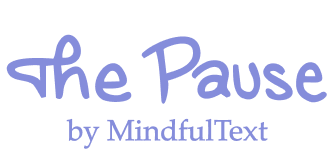Body Scanning Meditation (BSM) is a mindfulness practice that involves directing your attention to various parts of your body sequentially. This method helps individuals become attuned to physical sensations in the present moment without judgment, fostering a more relaxed state of being. Meditation practices are diverse, each serving specific purposes and engaging different cognitive and emotional processes.
The field of mindfulness and mindfulness meditation includes various techniques that help individuals manage stress, enhance self-awareness, and improve overall well-being. Types of meditation include breathwork, awareness, attention, imprinting, and insight. Among these, BSM stands out as an attention practice that calls for more research and validation.
The Science Behind Body Scanning Meditation
More Research is Needed
Body Scanning Meditation (BSM) is not often learned as a sole practice. It is commonly included in standard mindfulness-based stress reduction (MBSR) training which involves mindfulness meditation, body scanning, and yoga. MBSR has been proven as effective, but it often has high dropout rates due to the time commitment. So, a recent study from 2022 looked at just one part of MBSR, the body scan meditation, and found that there are no clear benefits to body scanning meditation as a sole mindfulness-based intervention.
Body Scanning Meditation (BSM) as a sole mindfulness-based intervention is unclear, requiring more research.
Long-Term Benefits of Meditation
While body scanning alone is not proven, it is often included as part of a larger intervention. Another case-control study focused on individuals who practiced Zen meditation, including body scanning, for over a decade. These long-term meditators demonstrated significantly better outcomes in several mindfulness-related variables and quality of life measures compared to non-meditators.
They showed greater ability to observe and describe their experiences, less judgmental thinking, higher resilience, and more satisfaction with life. This suggests that sustained meditation practice can lead to profound and lasting improvements in mental well-being.
Cellular Aging and Telomere Length
The study also explored the impact of meditation on cellular aging by examining telomere length, which is a biomarker of cellular aging. Telomeres, the protective end caps of chromosomes, tend to shorten with each cell division, and their length is associated with aging and stress levels.
The researchers found that meditators had longer telomeres compared to non-meditators.
Specifically, expert Zen meditators had a significantly longer median telomere length and a lower prevalence of short telomeres, indicating a slower rate of cellular aging.
How to Practice Body Scanning Meditation (BSM)
To practice body scanning meditation, find a quiet space and follow these steps:
- Get Comfortable: Sit or lie down in a relaxed position.
- Close Your Eyes: This helps minimize distractions.
- Focus on Your Breath: Take a few deep breaths to center yourself.
- Scan Your Body: Start from the top of your head and slowly move down to your toes, paying attention to each part of your body.
- Acknowledge Sensations: Notice any tension, discomfort, or other sensations without judgment.
- Breathe: Take deep breaths as you focus on each body part, allowing tension to release.
For a guided experience, try this body scan meditation from Prof. Mark Williams of Oxford Mindfulness Centre:
How Body Scanning Meditation Can Prevent Burnout and Enhance Patient Relationships
Regular mindfulness practices can help healthcare professionals become more aware of their own physical and emotional states, which is essential for managing stress and preventing burnout. For instance, a nurse who practices mindfulness meditation might notice signs of stress and emotional fatigue early on, allowing them to address these issues before they escalate into burnout. This proactive self-care approach helps healthcare professionals maintain their well-being, enabling them to provide high-quality care without compromising their health.
When healthcare professionals effectively manage their stress and stay mindful, they can communicate with their patients more empathetically and clearly. A stress-free doctor is more likely to be fully present and attentive during patient consultations, leading to more accurate diagnoses and effective treatment plans. Patients feel heard and understood, which strengthens the patient-provider relationship and improves patient satisfaction and health outcomes.
Additionally, encouraging patients to practice body scanning meditation can increase their self-awareness and help them describe their symptoms more accurately. This precision in reporting can lead to better diagnosis and treatment plans. Research shows that body scanning meditation can help manage chronic pain, reduce anxiety, and improve overall well-being. By incorporating this practice into patient care, healthcare providers can offer a holistic approach that addresses both physical and emotional health.

